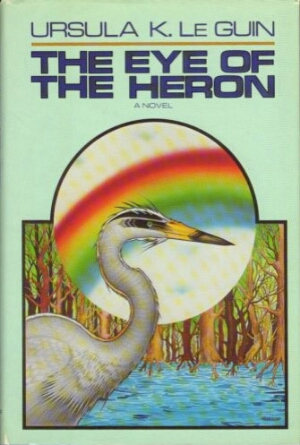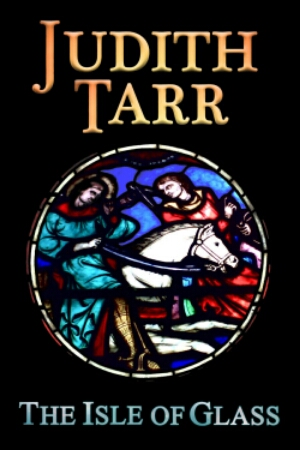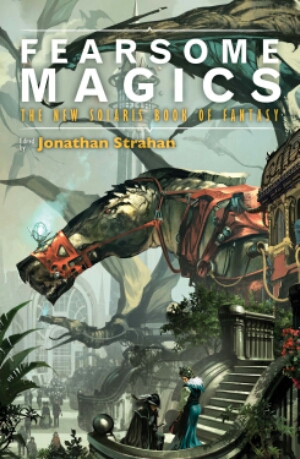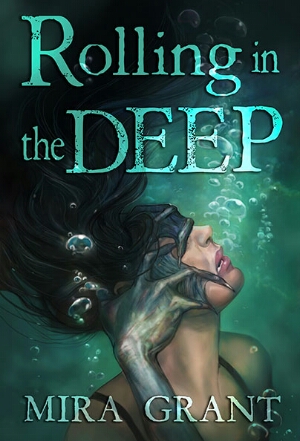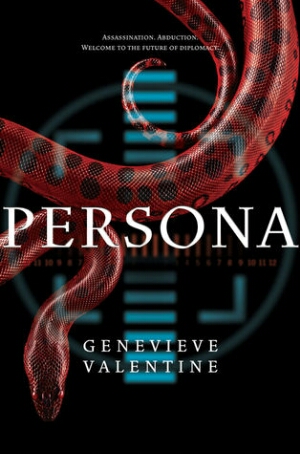The Eye of the Heron by Ursula K. Le Guin
In Victoria on a former prison colony, two exiled groups–the farmers of Shantih and the City dwellers–live in apparent harmony. All is not as it seems, however. While the peace-loving farmers labor endlessly to provide food for the City, the City Bosses rule the Shantih with an iron fist. When a group of farmers decide to from a new settlement further away, the Bosses retaliate by threatening to crush the “rebellion.”
Luz understands what it means to have no choices. Her father is a Boss and he has ruled over her life with the same iron fist. Luz wonders what it might be like to make her own choices. To be free to choose her own destiny.
When the crisis over the new settlement reaches a flash point, Luz will have her chance.
~~~~~
The Eye of the Heron has similar themes of rebellion and ecological concern as Ursula Le Guin’s earlier novel The Word for World is Forest, while being less focused on colonialism and having a stronger interest in ideas of different kinds of resistance and power.
This book is very clearly influenced by, among other things, the Indian independence movement and the Civil Rights movement, in part by its explicit reference to both Martin Luther King Jr and Mohandas Gandhi. The interest of The Eye of the Heron is in how nonviolence might become a totalising ideology, and what that would do to a community that then had to resist a violent oppressor; in fact, Le Guin turns nonviolence into a religion, with King and Gandhi as the central messianic figures. The Shantih community is fascinating in how it interprets “violence”; much of what Gandhi and King did is counted by the community as violent, and hence unacceptable as methods of resistance – conflict of any kind become taboo, and the community functions largely based on consensus.
On the other side of the conflict, Le Guin’s City dwellers live in a very basic Big Man society model; The Eye of the Heron takes a group of criminals, puts them on a shuttle, and imagines what kind of society they would create when they have to carve out a planet. Le Guin is rather cynical on this front; a combination of anarchic society ruled by the strongest combined with households with, at least in the upper classes, very much nineteenth century norms. The role of women, especially, is very constricted, letting Le Guin use Luz to discuss forms of power that women can have in a society that values them only for their sexual or reproductive potential.
This is especially interesting when Le Guin introduces Luz to Vera, a woman from the Shantih, and to Lev, the de facto leader of the resistance against the oppression by the City. The colliding systems of ideology and morality between City and Shantih don’t have a simple answer of better or worse, as The Eye of the Heron sees an excessive passivity in the face of injustice as culpable in that injustice in the same way that active perpetuation of the oppression is. It’s an interesting model of morality and Le Guin makes a fascinating discussion out of it across the course of the novel, without ever really giving an answer as to what she thinks is the right course of action.
If this makes it sound like The Eye of the Heron is as much political argument as novel, that’s because it is; it’s a pacifist, feminist piece of writing that has strong, solid convictions, the kind Le Guin is famous for having and showing. But it is still also a good novel; Le Guin writes excellent characters, and the cast of The Eye of the Heron are no exceptions. Luz is fantastic as the central character of the novel, as a changing and shifting character whose understanding of herself, society and the world around her shifts and changes; the way Le Guin shows Luz maturing over the course of the novel is absolutely stunning. The rest of the cast change less across the course of the story, but they still change, and they are all interesting and dynamic characters, with lives and independent ideas of their own, rather than just being adjuncts to the central story.
In the end, then, The Eye of the Heron is a readable, well-written, and interesting political tract by Le Guin, concerned with ecology and the philosophy of nonviolent resistance. It doesn’t stand out among her other work, but then, that’s setting a high vault to hurdle.
The Isle of Glass by Judith Tarr
Alfred of St Ruan’s Abbey was content to live as a quiet monk among his brethren, who did not remark upon his impossibly youthful face, healing talents and uncanny ability to ‘see’ into the minds of others. None would even think to ask him if he were of the Elven-kind. Yet inevitably there came a time when events intruded on the tranquility of the cloisters, and Alfred had to face the harsh realities of the England of Richard the Lionheart. Thrust reluctantly into the temporal world – a world unwilling to accept one of the Fair Folk as a priest of God – Alfred confronts his unacknowledged self. Part man, part priest, part elf-kind, he must choose his own destiny.
~~~~~
I picked up Isle of Glass after Kari Sperring talked enthusiastically and passionately about Judith Tarr’s historical fantasy work at Dysprosium last week. In some ways, I’ll be rehashing what she said about the books; but since she spoke more generally, I’ll only be discussing things appearing in this volume, and will touch on some things she did not.
The best way to discuss Isle of Glass is by contrast with its first chapter. Tarr has written a sparkling, scintillating, multifaceted gem of a novel; unfortunately, the first facet one sees on approach is the marred, scarred, dull one, that is unfortunately necessary to overcome in order to get to the rest of this beautiful construction.
The deepest scarring of this facet, to continue the metaphor, is also what shines brightest in the rest of the novel: characterisation. In the first chapter we meet Alfred, a foundling monk, and his friend from childhood, the Abbot Morwin, and see them discussing Alfred’s strange inhumanity, his fey appearance, and his lack of aging, in a theological context. While full of information, this opening chapter is also incredibly dry, and the characters are relatively absent – Alfred’s frustration is there, but there’s minimal other character.
Compare this with the rest of the book; everyone in Isle of Glass, from the minor characters like Kilhwch and Joscelin to more central figures such as Thea, Jehan or Richard Couer de Lion, has been written in such a way as to be human and to have meaningful motivations; however much we might despise their actions, it is clear Tarr, and the reader, must have sympathy for them too. Every character is portrayed as having an internal life, and a believable one; they’re all characters we want to know more about and spend more time with, even the ones we dislike. This is especially important given the diversity Tarr includes in Isle of Glass; while there is a paucity of female characters, including in the background, one of the key characters is a Greek Orthodox woman, and a number of important characters are gay. They’re presented without it being ever explicitly stated in a modern way, and through the appropriate lens of the time; including a theological underpinning to all the characters. This is one of the most interesting, and subtle, features of the novel; Tarr avoids the modern attitude to religion of it being an add-on, and renders it as the totalising worldview that is in fact the case.
Another scar on that first facet is what actually happens in it. Although Morwin and Alfred have a conversation that gives us vital information and sets up the rest of the novel in some ways, nothing actually takes place in it; and the ways it sets up later events are simply establishing of the baseline of the novel and of Alfred’s character, rather than doing any serious foreshadowing. Indeed, when Isle of Glass applies a ring structure, it isn’t with anything in the first chapter, but in later early chapters, as if Tarr doesn’t want to recall this first chapter.
Otherwise, Isle of Glass is an incredibly compact novel; while there’s naturally changes of pace in the novel, and Tarr handles them very well and matches them to her plot excellently. This is, in some ways, a very typical fantasy bildungsroman; Alfred has to leave the monastery and go to court, and en route he discovers who he is and begins to come into himself. Furthermore, Tarr makes it an incomplete bildungsroman; there is a theme in the novel of continuous self-discovery and change, and the various bildungsroman plots in the novel (such as Jehan’s) allow for multiple explorations of that.
There is also a larger, less personal, more epic plot of international politics and diplomatic relations; Tarr humanises that, by centring nations into kings – a writing technique that also reflects ideas of the time: monarchs as embodiments of nations. Isle of Glass avoids the obvious cliches of a novel set in the reign of Richard I, not pretending he loved England or acting as a kind of Robin Hood fanfic valourising Richard as an ideal human being. It’s more subtle than that, and more historically honest; based on strong research and an interest in history, Tarr manages to create a plot in the edges of the historical record that remains accurate even with the addition of the fantastical and fictional elements that comprise Isle of Glass.
In the end then, that first facet the reader encounters in Isle of Glass is incredibly misleading as to what Tarr has lined up for after it. I absolutely second Kari Sperring’s recommendation of this book, and this series.
Rolling in the Deep by Mira Grant
When the Imagine Network commissioned a documentary on mermaids, to be filmed from the cruise ship Atargatis, they expected what they had always received before: an assortment of eyewitness reports that proved nothing, some footage that proved even less, and the kind of ratings that only came from peddling imaginary creatures to the masses.
They didn’t expect actual mermaids. They certainly didn’t expect those mermaids to have teeth.
This is the story of the Atargatis, lost at sea with all hands. Some have called it a hoax; others have called it a maritime tragedy. Whatever the truth may be, it will only be found below the bathypelagic zone in the Mariana Trench…and the depths are very good at keeping secrets.
~~~~~
Seanan McGuire’s work under her pseudonym of Mira Grant is characterised by scientific detail, an interest in the scientific process, and zombies. Two of those three characteristics are exhibited in Rolling in the Deep, but the zombies are absent; instead, Grant is plumbing the depths for her monsters, in this case mermaids.
Actually, for anyone familiar with mythology, Grant’s mermaids aren’t as unfamiliar as the blurb suggests; Rolling in the Deep, as the text itself acknowledges, owes something of a debt to the sirens of the Odyssey, in its approach to the monstrous mermaids. It also owes a bit of a debt to the SyFy and History channels and to the found footage model of horror films, in its construction; told as a mix of false documentary voiceover and standard prose storytelling, Grant uses one to set the scene and ramp up the horror while the other tells her story and makes us care about that horror. It’s an effective combination, giving the reader a sense of impending dread without knowing what will happen while also giving us mundanity to contrast with that horror.
Grant continues to impress when the horror first appears, using the techniques of films like Jaws and Alien; having built up a sense of impending doom, she starts to give the reader flashes of the monster, brief and partial glimpses, while the cast of Rolling in the Deep are picked off one by one. It isn’t until the very close of the novel that we get a complete image of one of the monsters, and that is used to excellent effect, emphasising the horrific nature of these sirens, their violence and cruelty. Grant also accomplishes a lot by showing the final massacre of the characters from the points of view of a number of them; their different responses evoke the reality of a diversity of human reactions, and works very effectively to further the horror-agenda that she is pursuing. Unfortunately, it is during this sequence in Rolling in the Deep that Grant makes a misstep; a brief lighthearted moment breaks the tension and, rather than allowing it to come back more strongly, simply seems to be misplaced humour not justified by the amusement of the passage.
The final piece of the novella is its characters. Rolling in the Deep suffers slightly from having characters we have seen before from Grant, simply with different names attached; but at the same time this diverse cast (we have characters of various genders, sexualities, and races, and some disabled characters) works well in the jontext of the novella, especially the friendships between Anna the self-aware presenter and her cameraman Kevin, and between the captain of the cruiseship and her deaf longstanding first mate. Those friendships humanise those characters more than some of the others, although their increased pagetime also helps; while the girls of the Blue Seas mermaid troupe have the potential to be interesting, there is a little too much “tell” in their characterisation, in no small part because they only appear briefly as individuals.
In the end, though, Rolling in the Deep isn’t about character; it’s about making mermaids back into horrifying monsters. That is something Grant can be proud of having done excellently.
Persona by Genevieve Valentine
In a world where diplomacy has become celebrity, a young ambassador survives an assassination attempt and must join with an undercover paparazzo in a race to save her life, spin the story, and secure the future of her young country in this near-future political thriller from the acclaimed author of Mechanique and The Girls at Kingfisher Club.
When Suyana, Face of the United Amazonia Rainforest Confederation, is secretly meeting Ethan of the United States for a date that can solidify a relationship for the struggling UARC, the last thing she expected was an assassination attempt. Daniel, a teen runaway turned paparazzi out for his big break, witnesses the first shot hit Suyana, and before he can think about it, he jumps into the fray, telling himself it’s not altruism, it’s the scoop. Now Suyana and Daniel are on the run—and if they don’t keep one step ahead, they’ll lose it all.
~~~~~
Persona is one of the first titles to come out of Simon & Schuster’s new genre fiction imprint SAGA Press, and shows how high Joe Monti is aiming: Genevieve Valentine’s previous novels have been hugely, and rightly, acclaimed. Persona also shows how multi-talented Valentine is as a writer; Mechanique was post-apocalyptic steampunk fantasy, The Girls at the Kingfisher Club a Roaring Twenties fairytale retelling without any magic, and Dream Houses a claustrophobic far-future psychological study.
Persona, on the other hand, is a near-future political thriller and critique of modern celebrity culture. It’s a rather subtle novel on some levels, but in its allegorical approach Valentine is one of the more heavy-handed writers out there; alongside, say, Christopher Brookmyre’s more overtly political works (such as his Parlabane books). It takes universal surveillance, the centring of the celebrity-personality in politics (in the US, see Bush’s faux-folksy ways or the cult of Obama; in the UK, see Tony Blair or the attacks against Miliband on grounds of personal presentation), the technological war between celebrities and paparazzi, the increasing importance of SpAds, and more elements of modern politics and popular culture and wraps them up together in a fascinating near-future remodelling of how world politics could work. How we get there from here isn’t discussed in Persona, and Valentine doesn’t seem interested in the questions of either how Faces come to be or how the United Nations becomes the key political player on local, national and international levels. Rather, we’re simply told this is how it is, and indeed have to work out how the world functioned, rather than having it explained to us, and even at the close of the novel that functioning doesn’t appear to be entirely clear.
This is unfortunate, but does not make Persona as a whole fail; instead, Valentine’s novel focuses on Suyana attempting to keep herself alive, trying to work out who has put a hit on her, and turning the tables on whoever that is. If that sounds like a straightforward plot for a thriller, rather than a framework in which to examine closely various aspects of the combination of celebrity culture with politics, you would be right; Valentine’s complex setting is rather placed on the backburner as we watch Suyana try to win her way, and while flashes of it come up at times, they are elements that wouldn’t be out of place in a contemporary thriller, such as the diplomat having homosexual affairs (in private, in order to not embarass her nation) or the carefully orchestrated relationships carried on in public and, indeed, in private that have no feelings behind them. Daniel’s storyline doesn’t add anything to this; Persona uses him to interrogate the motives of the paparazzi, but ends up actually largely being a little trite and glib about him, instead of complex or as interesting as one might hope.
For all that, what Persona does, it does very well. It is exciting, fast-moving, full of twists and turns some of which are obvious and others of which are rather more subtle; but Valentine’s amazingly versatile writing style fits itself, here, perfectly to the thriller mode, keeping the story moving, avoiding being bogged down in detail while still painting a very vivid portrayal, for instance, of trendy dive bars and undercover paparazzi operations. Persona keeps moving fast, letting up on occasion but only to allow a human moment or two between the fast-moving fleeing and constant reaction of our protagonists; only as the novel draws to its close does anyone become truly active rather than reactive, much as their histories, we know, are active.
Persona will disappoint anyone going in for detailed or subtle critique of society and politics, but as a near-future thriller with some socio-political commentary in it, Valentine delivers tremendous value for money.
Harrison Squared by Daryl Gregory
Harrison Harrison—H2 to his mom—is a lonely teenager who’s been terrified of the water ever since he was a toddler in California, when a huge sea creature capsized their boat, and his father vanished. One of the “sensitives” who are attuned to the supernatural world, Harrison and his mother have just moved to the worst possible place for a boy like him: Dunnsmouth, a Lovecraftian town perched on rocks above the Atlantic, where strange things go on by night, monsters lurk under the waves, and creepy teachers run the local high school.
On Harrison’s first day at school, his mother, a marine biologist, disappears at sea. Harrison must attempt to solve the mystery of her accident, which puts him in conflict with a strange church, a knife-wielding killer, and the Deep Ones, fish-human hybrids that live in the bay. It will take all his resources—and an unusual host of allies—to defeat the danger and find his mother.
~~~~~
Harrison Squared is Gregory’s follow-up prequel to We Are All Completely Fine, centred on Harrison Harrison’s experience as a child that leads to his participation in the support group of the latter novel. Naturally, it requires no knowledge of the earlier-sequel, and that requires (though perhaps is given interesting extra layers by it).
Harrison Squared is very much a Lovecraftian novel, but at the same time a critique of Lovecraft; using some of the tropes of the original weird fiction practiced by HPL, Gregory also turns them on their head. From the idea of a stranger coming to town and being excluded from some weird mystery, through the critique of the universal loyalty to the cult of a place, and into the racism and misogyny of Lovecraft, Harrison Squared ticks all the boxes whilst also critiquing them; hence the teenage kids of Dunnsmouth rebelling against the strange religious strictures of their parents; hence the non-white protagonist Harrison Harrison himself having to fight the evil all-white cult; hence even the Deep Ones not being so monolithically loyal to the Old Ones. It’s an interesting approach, requiring a good deal of familiarity with Lovecraft to understand what tropes Gregory is playing with; and in a modern young adult audience, it is perhaps a bit of a stretch to assume such a strong familiarity with works of the weird nearing a century in age.
The same goes for the references spread throughout the novel, from the biology teacher who gets his class to attempt to reanimate frogs with electricity to the librarian endlessly searching for a single, specific tome; from the town’s name of Dunnsmouth to the names of the sonar-buoys Harrison’s mother uses. Gregory has scattered these moments throughout, and while they theoretically add nothing to the novel, without an understanding of what Gregory is referencing, Harrison Squared gives every impression of having simply gotten a little jumpy, filled with strange moments that add nothing to the plot; while understanding these minor references instead gives a little insight into what Gregory is trying to do. They also slow the plot down considerably; because Gregory feels the need to get each of these in, Harrison Squared is far slower than it ought to be, as these moments don’t vanish as we move towards our conclusion, instead simply slowing that conclusion down with a sense of uneveness.
As a novel, rather than a riff on Lovecraft, then, it is already clear that this is a little uneven. However, where Gregory excels is in his characters; Harrison himself is an excellent portrait of a teenager used to looking after his parents, but with a darker history – as well as making Harrison Squared a novel which has a mixed-race protagonist with a disability (the sections talking about how Harrison deals with his prosthetic leg are excellently done, and very matter of fact). He’s not written as someone to be pitied, but as someone strong who has undergone a horrifying experience; the loss of his leg is simply something that happened, not life-defining. Meanwhile, the rest of the cast are also interestingly written, albeit on the whole a little less well-characterised; that is in part due to the first-person narration but also because there is a degree of flattening of the rest of the cast in favour of Harrison’s characterisation; female and male alike are essentially there to serve the needs and interests of the protagonist, including admittedly the need to negotiate and grow up.
None of that is to say I wouldn’t recommend Harrison Squared to a reader familiar with the “canon” of H. P. Lovecraft; but Daryl Gregory, in aiming this novel at a young-adult market, has instead sidestepped that, especially as Lovecraft becomes increasingly marginal and unpopular as a “model” of the Weird.

